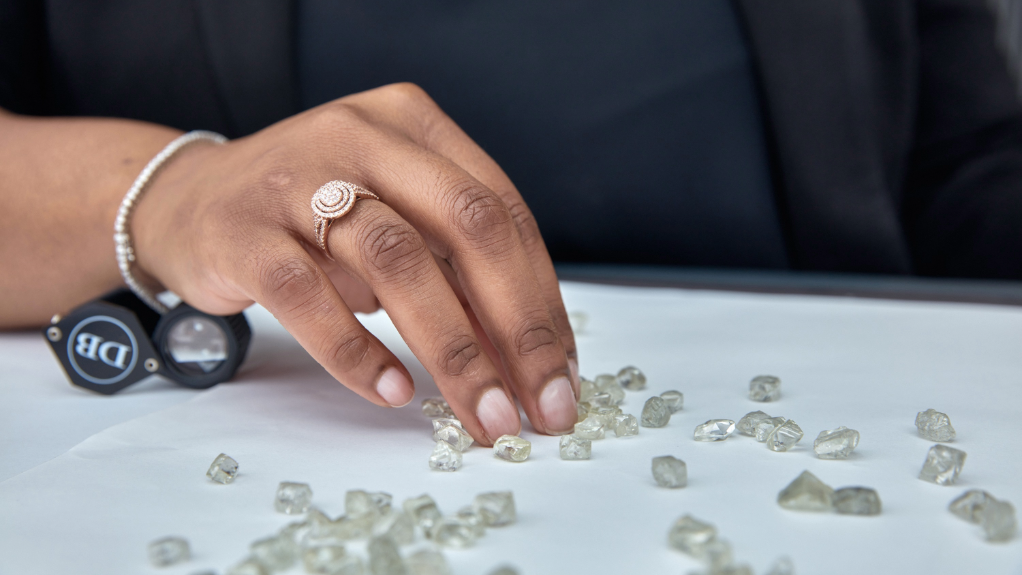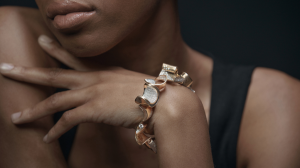By focusing on sustainability, innovation and comprehensive industry exposure, diamond miner De Beers’ Shining Light Awards is evolving to meet the changing needs of the jewellery industry to recognise and support talented youth and as a means of boosting their careers.
The competition, established in 1996, has become a key platform for discovering and nurturing young jewellery design and innovation talent, says De Beers beneficiation manager Kagiso Fredericks.
The awards are also intended to add further local value through downstream beneficiation in South Africa, Canada, Namibia and Botswana, where De Beers operates.
This approach underscores the company’s commitment to providing region-specific developmental strategies, thereby recognising the unique needs and potential of every country’s participants.
This year’s competition encourages designers to create pieces that align with modern consumer values, focusing on meaningful connections and sustainability. By incorporating elements of identity and human expression, the competition aims to produce designs that are innovative and deeply personal, says Fredericks.
The competition has evolved from merely highlighting talent to becoming a developmental pillar in the jewellery design sector, he notes.
Key Focus
A key element of the Shining Light Awards is its emphasis on youth entrepreneurship.
Fredericks highlights the importance of exposing young designers to the entire diamond value chain, from sorting and cutting to manufacturing and retail. This comprehensive approach ensures that participants gain a thorough understanding of the industry, consequently fostering a new generation of informed and skilled jewellery designers.
For example, third prize winner from South Africa Roelien Geldenhuys was exposed to various aspects of the diamond industry, including time spent at the De Beers corporate office and local jewellers.
This immersive experience provided her with valuable insights and skills, ultimately resulting in her establishing her own jewellery design company – Lurozzia Jewellers, enthuses Fredericks.
In line with modern industry practices, the competition now requires designers to submit three-dimensional or computer-aided designs (CAD).
This requirement encourages educational institutions to incorporate advanced design technologies in their curricula, ensuring that students are well prepared for future industry demands.
“By embracing technology, the Shining Light Awards not only elevate the standard of submissions, but also enhance designer’s capabilities to realise their creations. This forward-looking approach aligns with the competition’s broader goal of fostering innovation and adaptability in the jewellery design sector,” adds Fredericks.
The awards also encourage educational institutions to acquire modern design resources such as CAD software and courses.
Fredericks notes that many schools, upon committing to the awards process, strive to make these facilities available and incorporate CAD skills into their teaching, thereby not only preparing students for the competition, but also enhancing their overall design education.
The theme of this year’s competition – Redefining Luxury – challenges participants to reconsider traditional notions of luxury, emphasising contemporary values such as identity and sustainability.
Prizes, Judging Process
Originally aimed at showcasing design talent, the Shining Light Awards has shifted its focus towards sustainable development, transitioning from offering cash prizes to developmental awards.
This is a significant change, as “these opportunities are designed to offer lasting benefits, equipping winners with the skills and connections needed for long-term success in the competitive jewellery industry”, says Fredericks.
The awards are open to entrants from the countries where De Beers operates, with first, second and third prizes to be awarded for every country.
De Beers notes that the judging process is independent and rigorous, with the panel, composed of experts from the jewellery industry and related fields, scoring each submission according to predefined criteria.
To ensure impartiality, Fredericks points out that applicants are identified only by a number, maintaining anonymity until the top three designs are selected in every country.
First prize winners receive scholarships at leading international institutions, providing the opportunity to study at some of the world’s most prestigious design schools. This exposure to global design standards and practices is invaluable for their professional growth, notes Fredericks.
As part of the evolution of the awards, participants for this year’s competition have the opportunity to select the type of award that supports their future ambitions and is aligned to their current skills level.
The categories include ‘Business Support’ for participants who have a jewellery manufacturing/design business and are seeking support to grow their enterprise, ‘Skills Development Support’ for those applicants who wish to further develop their jewellery manufacturing skills and ‘Tuition Support' for those applicants who intend to further their studies in jewellery design.
Edited by: Donna Slater
Features Deputy Editor and Chief Photographer
EMAIL THIS ARTICLE SAVE THIS ARTICLE
ARTICLE ENQUIRY
To subscribe email subscriptions@creamermedia.co.za or click here
To advertise email advertising@creamermedia.co.za or click here
















